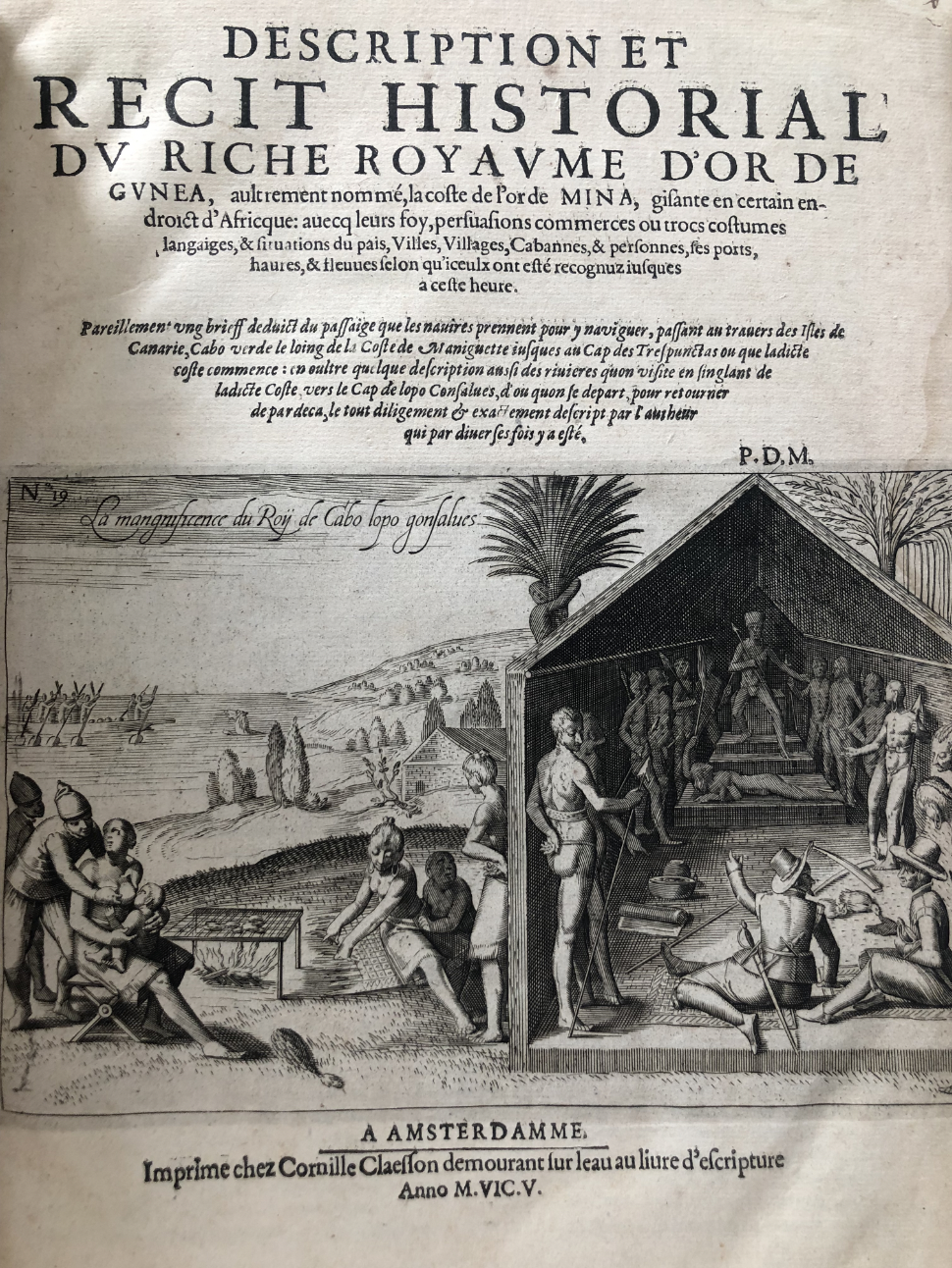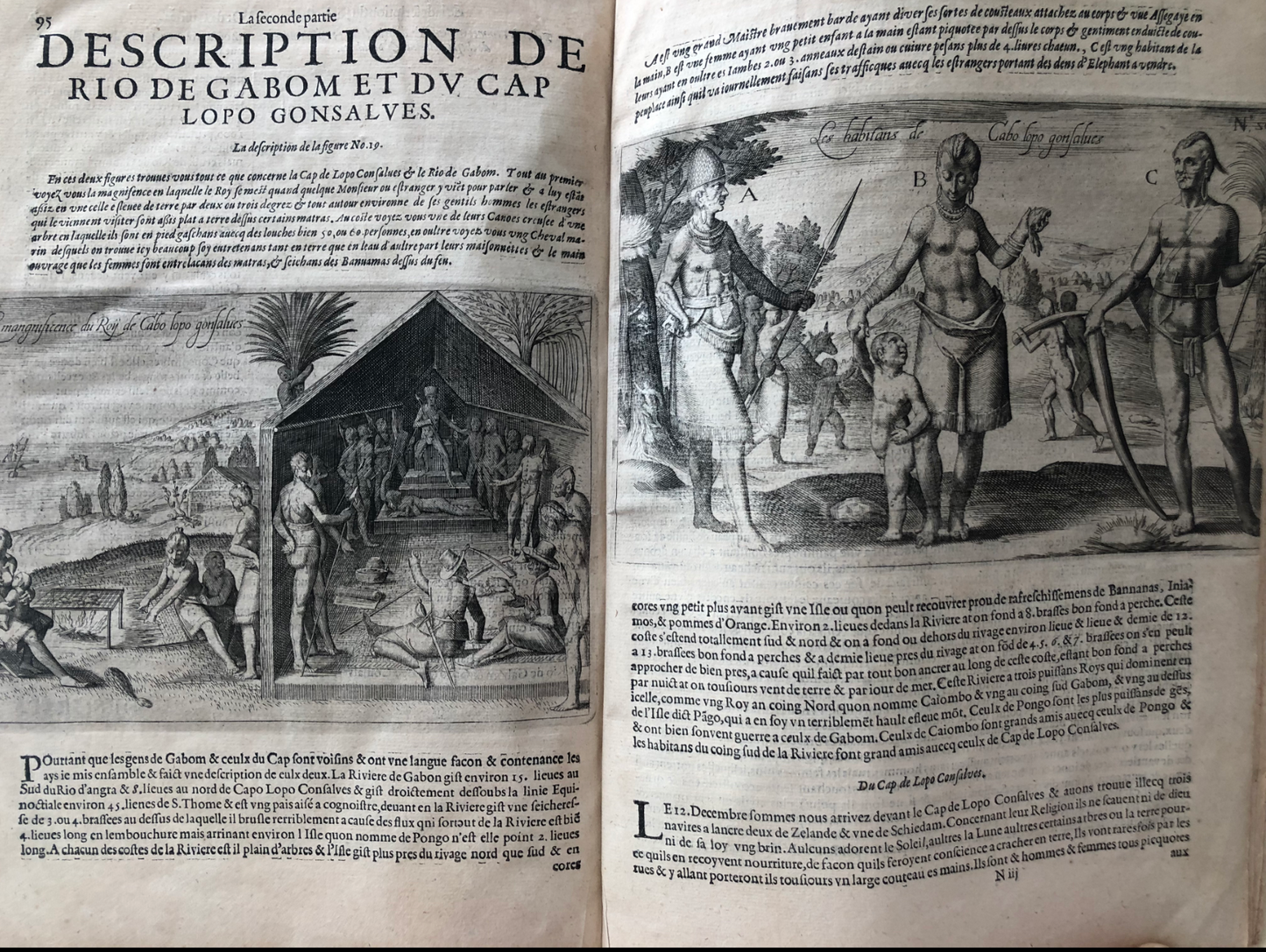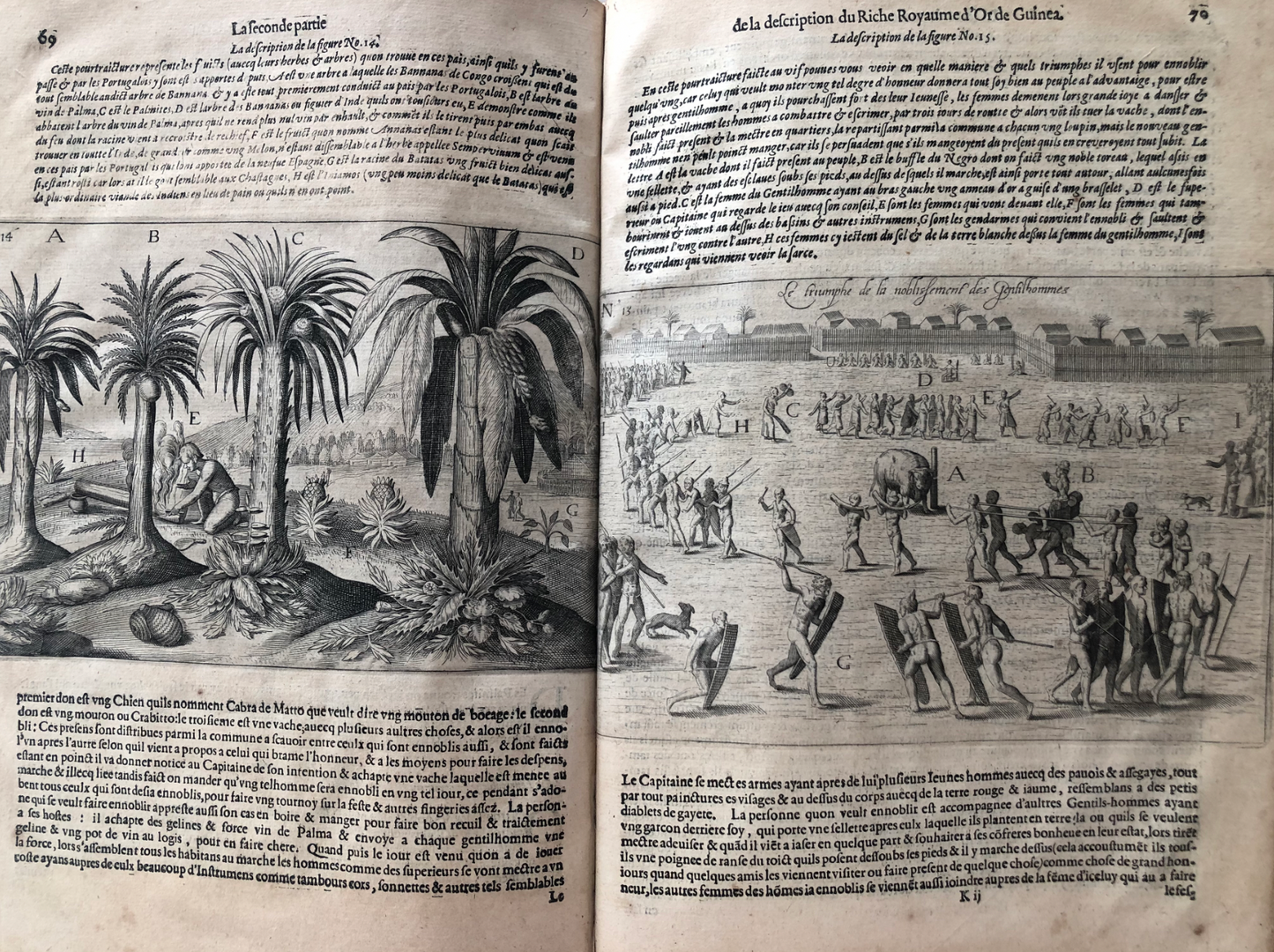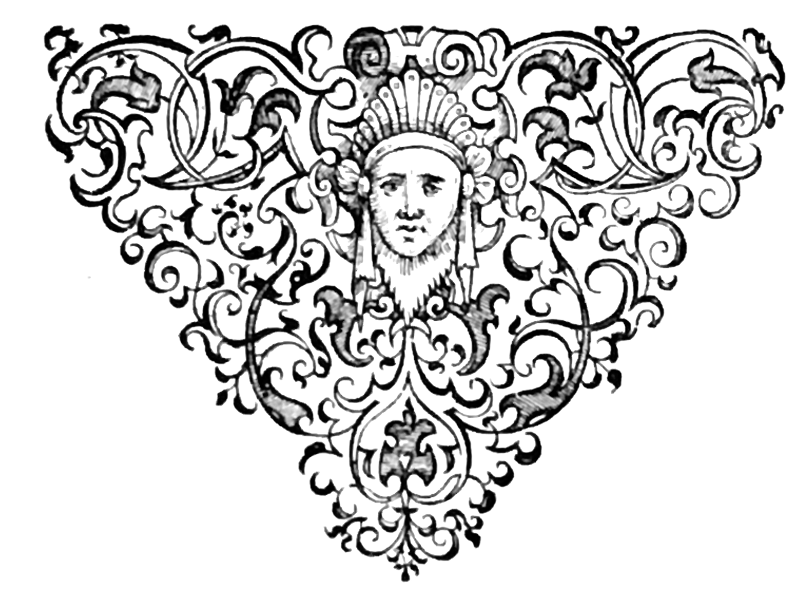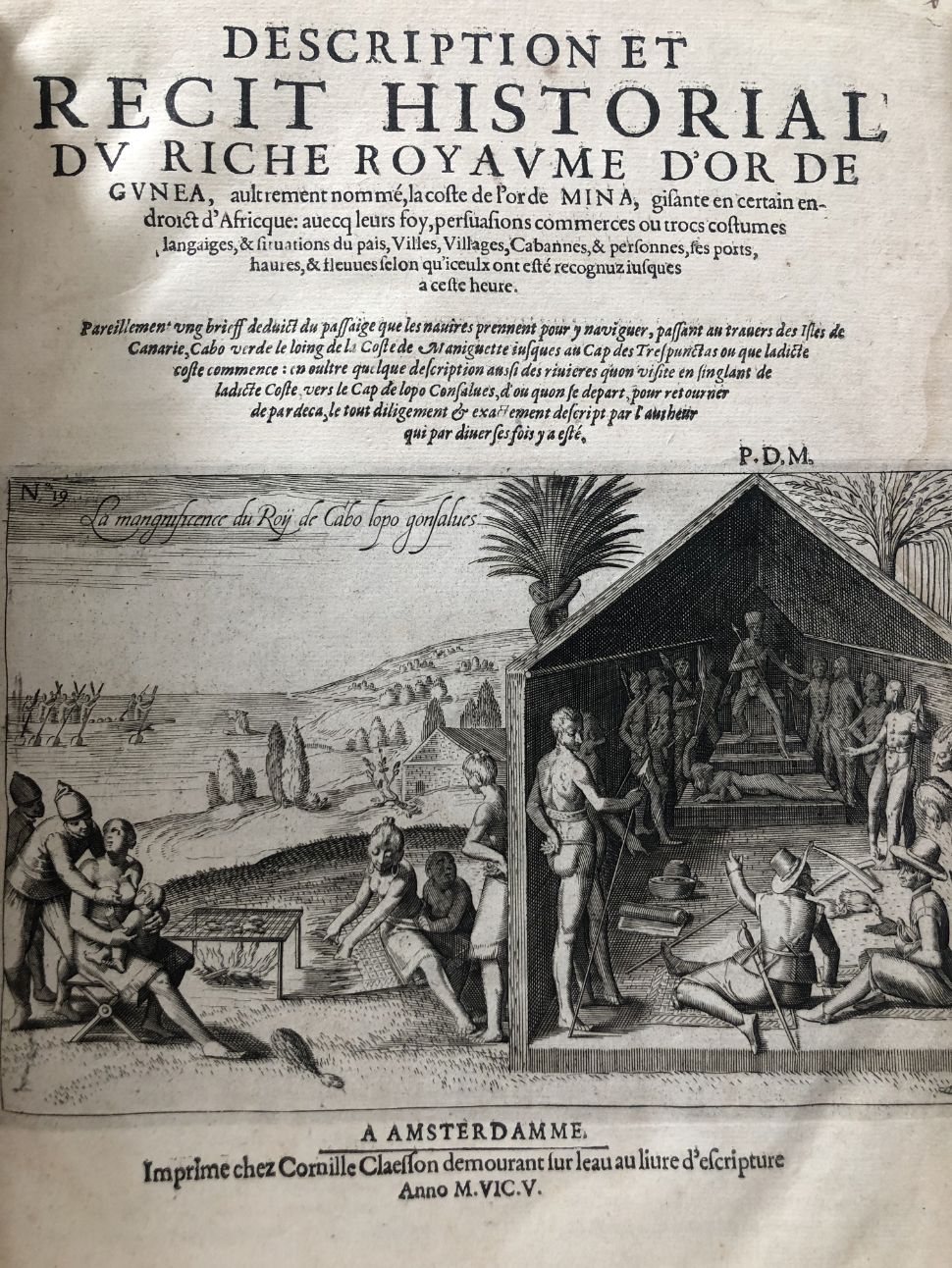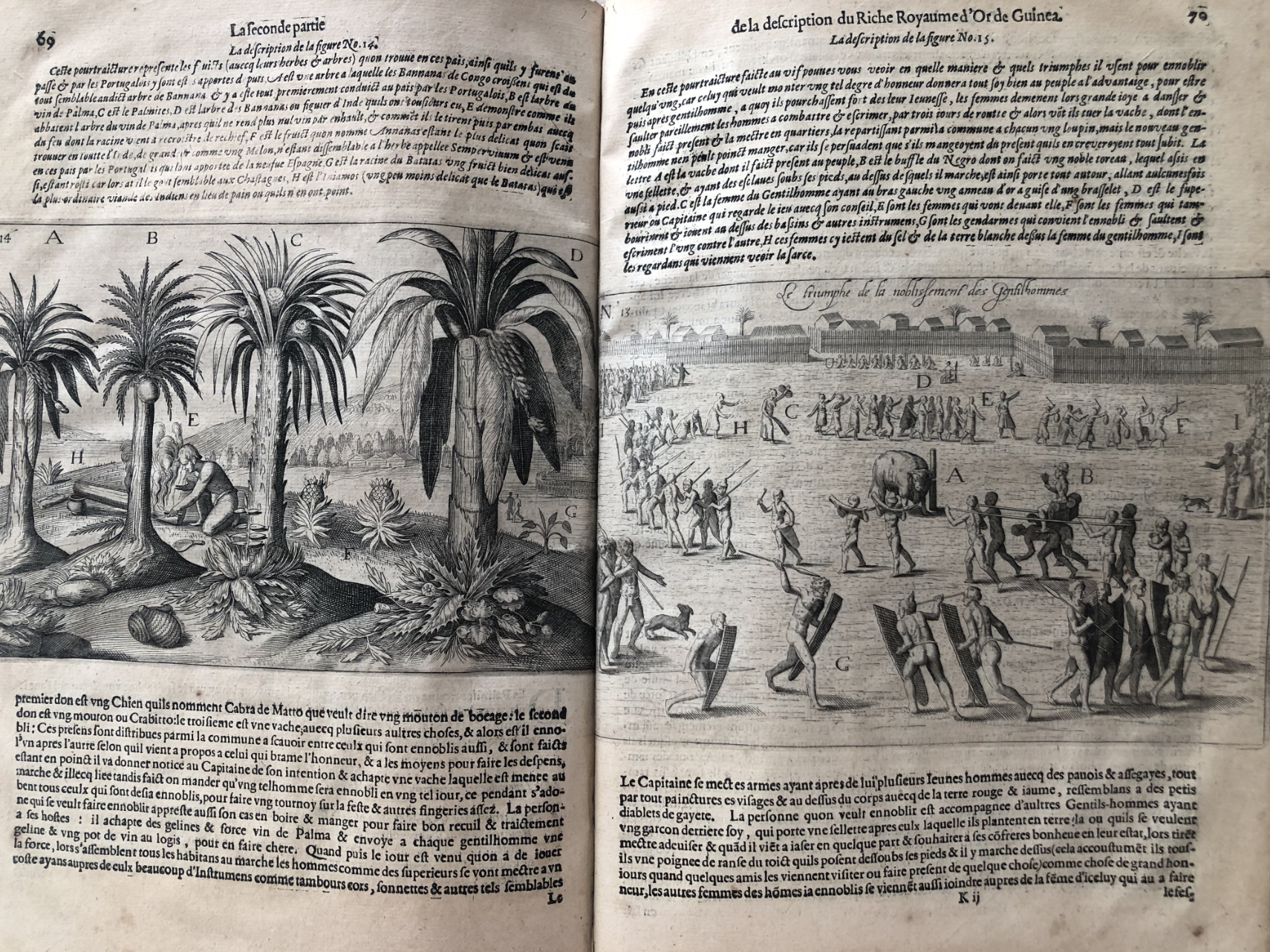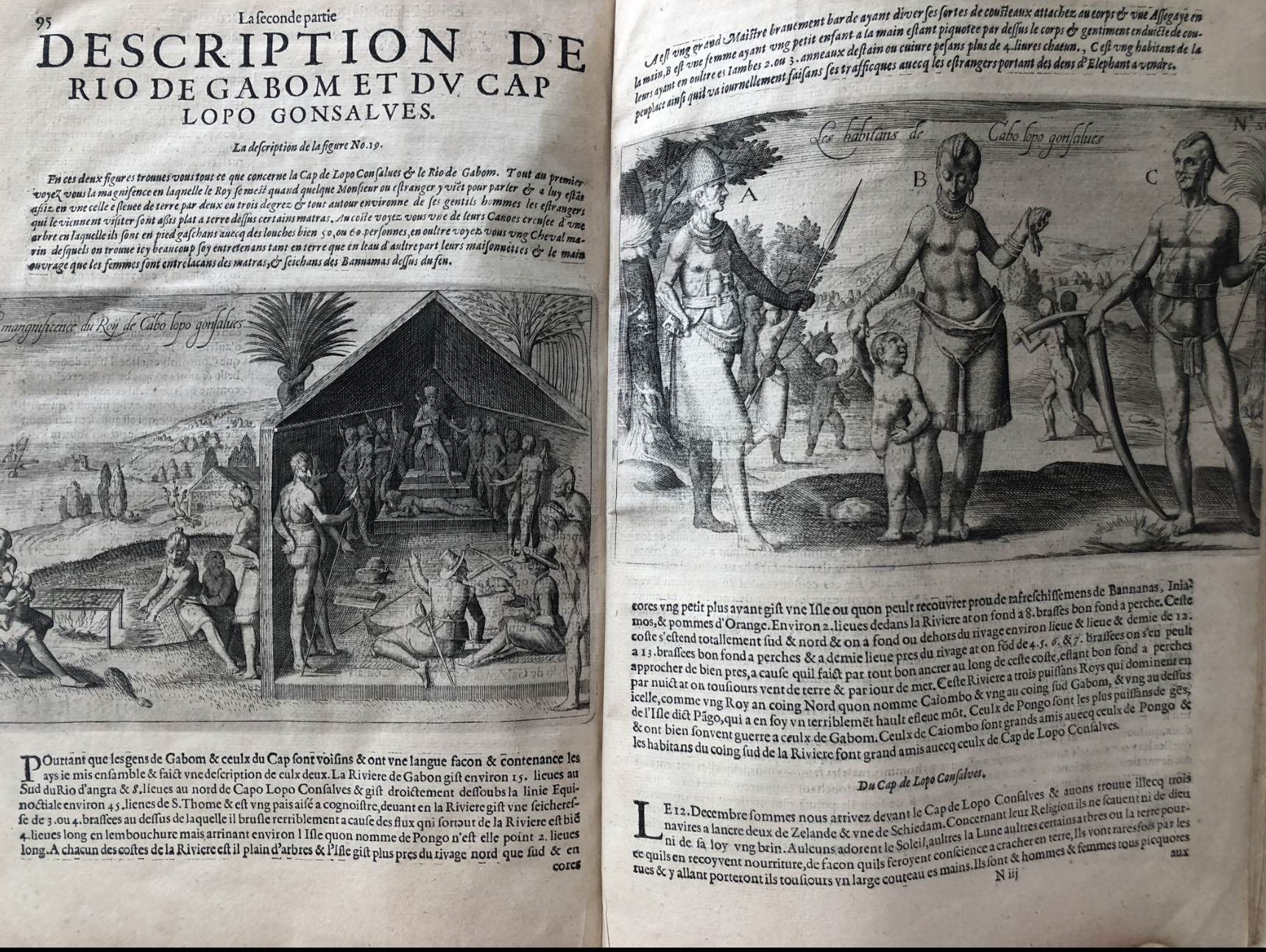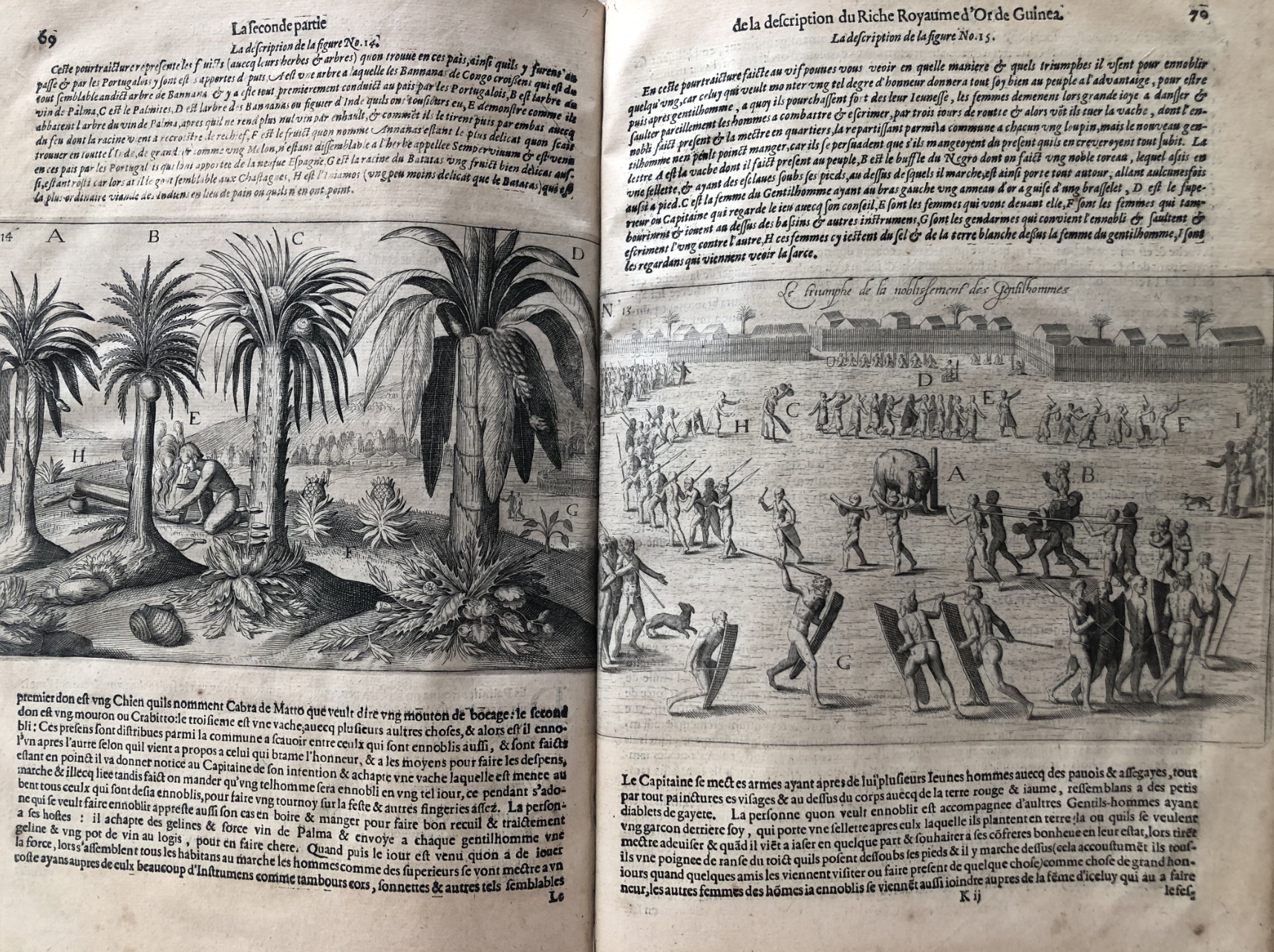DeBryRareBooks
Description et recit historial du riche Royaume d'or de Gunea, aultrement nommé, la coste de l'or de Mina. Amsterdam: C. Claesson, 1605.
Description et recit historial du riche Royaume d'or de Gunea, aultrement nommé, la coste de l'or de Mina. Amsterdam: C. Claesson, 1605.
Couldn't load pickup availability
"Description et recit historial du riche Royaume d'or de Gunea, aultrement nommé, la coste de l'or de Mina."
-Pieter de Marees
-Published in Amsterdam by Cornelis Claesz "C. Claesson"
-1605
-Complete work: TP, 1-99, [4] -21 engravings in text
-Condition: some faint marginal stains, light browning, most plates have slight trimming at the fore-edge, small rust hole in E3 affecting a few letters
-Modern limp vellum.
Pieter de Marees’s Beschrijvinghe ende Historische verhael van het Gout Koninckrijck van Guinea (1602) is the most important European work on West Africa of the seventeenth century. A Dutch merchant sailing from Enkhuizen, little else is known about De Marees apart from this account of his voyage to the Gold Coast around 1597. Written for merchants and policy makers in the newly independent Dutch Republic, it was soon translated into Latin, French, and German, influencing and shaping European views of Africa. Images copied from his illustrations would be used by the cartographer Blaeu, and other illustrators, long into the 17th Century. The work describes the Akan people of modern-day Ghana and the Gold Coast, offering a remarkably detailed view of society. It includes descriptions of political and social structures, trade, religion, and even local hairstyles, memorably illustrated in a famous plate. De Marees’s description of the Akan remains a key primary source for historians and anthropologists today. Being a merchant, he focused on the region’s valuable commodities—gold, ivory, and pepper—and included a phrasebook to aid future traders. His observations on war captives being held as slaves within African societies predate, and in some ways anticipate, the transatlantic slave trade that would expand later in the seventeenth and eighteenth centuries.
USTC 1012454 (1 copy only in the Americas - NYPL)
